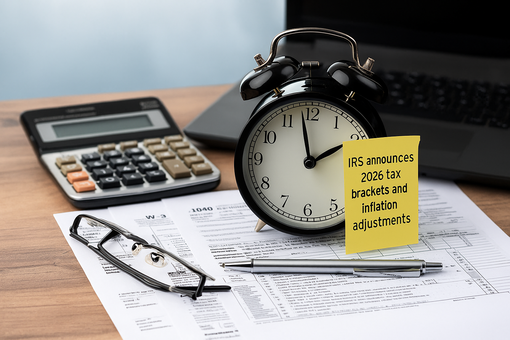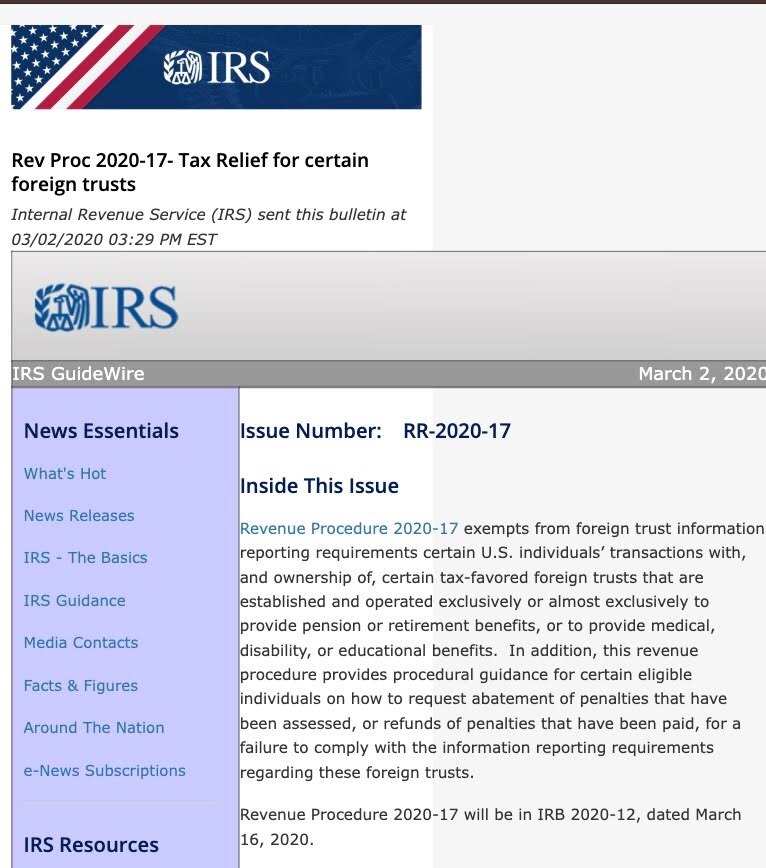RESP: What US expats need to know about education savings and tax implications

Every year, Canadian families pour billions into Registered Education Savings Plans, building a cushion for their children’s future studies. These accounts reward early savers through government grants and years of tax-deferred growth, making the RESP a cornerstone of Canadian education planning. Yet for many US expats in Canada, this same tool comes with an unexpected twist – different rules under the IRS that can turn a simple savings plan into a complex cross-border tax issue.
This article is brought to you by Taxes for Expats, your trusted partner for navigating RESP taxation across borders with precision and clarity. Our team verifies every rule, ensures correct claim and filing procedures, and aligns your reporting with the most current standards for full peace of mind.
What is a Registered Education Savings Plan (RESP)?
Many couples open an education savings plan to set aside funds for their child’s future college tuition, expecting steady growth through government grants and investment returns. This everyday scenario highlights a program many Canadians rely on to build their children’s education funds – yet for families with ties to the US, that same plan can take on a complex tax life of its own.
With that illustration, the question of what an RESP is arises. The Registered Education Savings Plan is a Canadian program that helps parents and caregivers save for a child’s post-secondary education. Contributions are made by a subscriber for a named beneficiary with a financial institution serving as the promoter. There is no deduction for contributions, and the lifetime contribution cap per beneficiary is 50,000 Canadian dollars.
The RESP structure combines three key components that shape how funds grow and are taxed:
- Contributions build the base of the account. There’s no annual limit, but the total lifetime room is 50,000 dollars per beneficiary, and any excess triggers a 1 percent per month penalty until corrected.
- CESG (Canada Education Savings Grant) adds government support. The grant equals 20 percent of the first $2,500 contributed each year, can be carried forward if unused, and offers a lifetime maximum of $7,200 per beneficiary.
- Tax-free growth in Canada gives the plan its appeal. Investment earnings compound inside the RESP, and when funds are withdrawn as Educational Assistance Payments, they are taxable to the student, while Accumulated Income Payments are taxed to the subscriber plus an extra 20 percent (or 12 percent in Quebec), with the option to claim a rollover to an RRSP if there is room.
For many Canadian residents, the RESP’s mix of compounding, the CESG of up to $7,200, and student-level taxation makes it a cornerstone of family planning. For US citizens or green card holders, however, the same plan is treated as a foreign grantor trust for income tax purposes, often bringing extra reporting under FBAR and FATCA.
Under Revenue Procedure 2020-17, many eligible individuals in 2025 enjoy relief from Forms 3520 and 3520-A, as confirmed by the May 8, 2024, proposed regulations and the draft 3520-A instructions that allow reliance on those rules. Yet even with that relief, PFIC reporting on Canadian mutual funds inside the plan can still apply – making what’s simple in Canada potentially complex abroad.
How RESP contributions are taxed for US citizens
When a US citizen invests in a Canadian Registered Education Savings Plan, the IRS typically treats that plan as a foreign grantor trust with the subscriber – often the parent – as the US owner. In practice, this means RESP contributions and all earnings inside the plan must be reported on the owner’s US tax return and are fully taxable as though the money were held in a regular non-registered account.
Even though contributions to the RESP aren’t tax-deductible in Canada and withdrawals may be taxed in Canada when paid to the student, the US owner still must include the income for US tax purposes, which can cause double taxation issues. Government grants and investment earnings inside the RESP are subject to US tax, and events like a beneficiary change or a refund to the sponsor reinforce the grantor trust status under the rules like Revenue Procedure 2020-17 – so you must still monitor the RESP on income tax compliance and whether you can claim foreign tax credits.
Think of it like saving for college in two different tax worlds. For instance, Emma, a US citizen living in Toronto, opens an RESP for her son, and the Canadian government chips in a small grant to help the savings grow faster. Each year, Emma must still report the account’s interest and dividends on her US tax return using Form 1040 – typically through Schedule B for interest and dividends – even though Canada doesn’t tax that income until withdrawal. Later, when her son finally uses the funds for university, the same money faces Canadian tax too, making it clear that managing an RESP across borders is about smart coordination, not just saving.
US citizens reporting and compliance law
As the IRS explains, “Revenue Procedure 2020-17 exempts from foreign trust information reporting requirements certain US individuals’ transactions with, and ownership of, certain tax-favored foreign trusts.” That single rule shapes how your RESP connects with Form 1040, FBAR, Form 8938, and, when applicable, Forms 3520 and 3520-A.
Form 1040 – report annual income
RESP income is generally taxed to the US subscriber under grantor trust rules, so it becomes part of the filer’s income tax return. There is no deduction for RESP contributions.
- Report interest, dividends, and capital gains from the RESP each year.
- Attach Form 8621 if the plan holds Canadian mutual funds or ETFs that qualify as PFICs.
- Convert all figures to US dollars using the IRS yearly average exchange rate.
FBAR (FinCEN 114) – if total foreign accounts > $10,000
An RESP at a Canadian financial institution counts as a foreign financial account for FBAR purposes. Filing is required when the total of all foreign accounts exceeds $10,000 at any point in the year. The FBAR is filed separately from your tax return and submitted electronically to FinCEN.
The standard due date is April 15, with an automatic extension to October 15. The Supreme Court case Bittner v. United States confirmed that non-willful FBAR penalties apply per form rather than per account, reducing potential exposure.
Form 8938 (FATCA) – if thresholds are met
Form 8938 is filed with your Form 1040 when specified foreign financial assets surpass set thresholds. For taxpayers living abroad, the threshold is $200,000 at year-end or $300,000 at any time for singles, and $400,000 or $600,000 for joint filers. This FATCA requirement does not replace the FBAR; both may apply. Treat your RESP as a specified foreign financial asset once these thresholds are met.
Form 3520 / 3520-A – if still required under US rules
Many RESPs now qualify as tax-favored foreign nonretirement savings trusts, meaning eligible individuals are exempt from 3520 and 3520-A filing under Revenue Procedure 2020-17. This exemption does not remove the obligation to include income or other foreign account reporting.
- Form 3520 reports certain transactions with foreign trusts and large foreign gifts. Penalties start at the greater of $10,000 or 35 percent of unreported amounts.
- Form 3520-A serves as the annual information return for a foreign trust with a US owner; failure to file can trigger a penalty of the greater of $10,000 or 5 percent of the value treated as owned.
If an RESP doesn’t meet the exemption conditions, these forms must still be filed. The proposed regulations from May 8, 2024, and the 2025 draft instructions reaffirm that the relief continues under consistent application.
NOTE! Penalties for missed filings or inaccurate reports can be severe and compound quickly across forms.
- FBAR: Non-willful penalties can reach $10,000 per form (inflation-adjusted), while willful cases may face the greater of $100,000 or 50% of the account balance.
- Form 8938: Starts at $10,000 and rises up to $50,000 after IRS notice, with possible 40% accuracy penalties.
- Forms 3520 / 3520-A: Initial penalties begin at the greater of $10,000 or 35% of unreported trust transfers, and 5% for trust-owner filing failures.

Revenue Procedure 2020-17 for RESPs
Revenue Procedure 2020-17, released by the IRS, brought welcome relief to Americans holding certain foreign education savings accounts. It allows a Registered Education Savings Plan to skip Forms 3520 and 3520-A reporting if it meets specific conditions. The goal was simple – to make compliance easier without drowning taxpayers in complex paperwork.
Eligibility: RESPs qualify as tax-favored non-retirement savings trusts when contributions stay within set limits of $10,000 per year or $200,000 over a lifetime, and withdrawals are used only for education. These limits reflect how Canada structures RESPs and are recognized by the IRS under this procedure.
- Impact: This change eases the filing load for US citizens and expats, cutting down on forms but not removing regular income tax reporting or other obligations such as FBAR and Form 8938. Any growth inside the plan remains taxable in the US, so the money under the RESP taxable rules still matters.
- Penalty relief: Taxpayers who previously faced Section 6048 penalties can claim a refund or abatement by submitting Form 843 and noting that the relief is under Revenue Procedure 2020-17.
We can review your plan’s contributions and earnings, confirm that your Registered Education Savings Plan truly qualifies under this IRS guidance, and make sure your income tax filings reflect every taxable detail accurately while keeping you compliant with current US rules.
How to avoid double taxation of RESP income
With the right approach, a Registered Education Savings Plan can serve both Canadian and US tax systems without causing overlap. Coordinating the timing of income and ownership ensures RESP earnings flow smoothly across borders.
- Use foreign tax credits on US filings: Form 1116 allows taxpayers to offset US income tax with Canadian taxes already paid on the same income. The credit can be carried back one year and forward ten years under section 904 of the Internal Revenue Code, offering flexibility to balance tax years when payments and income don’t match. File only when the tax qualifies under IRS credit rules.
- Align income recognition with each tax year: Choosing whether to treat taxes as “paid” or “accrued” on Form 1116 helps match reporting between countries. Schedule C tracks redeterminations when the timing of tax collection changes. In Canada, Educational Assistance Payments are taxable to the student and may appear years after the US grantor has already reported the RESP’s earnings – synchronizing these differences reduces the risk of double inclusion.
- Consider plan ownership for better coordination: When a non-US spouse is the sole subscriber and contributor, the IRS may not treat the US spouse as the trust owner under grantor-trust rules. PFIC reporting, however, must still be reviewed at the shareholder level. Structuring ownership this way can ease compliance while keeping access to the Canada Education Savings Grant intact and respecting limits such as the C$50,000 lifetime contribution cap and the C$7,200 grant ceiling.
- Work with an experienced cross-border tax advisor: A thorough review confirms whether the RESP needs to appear on the FBAR when total foreign accounts exceed $10,000 (with an automatic extension to October 15) and checks Form 8938 thresholds of $200,000 for single filers or $400,000 for joint expats. Canadian funds inside the plan may trigger Form 8621 unless a QEF or mark-to-market election is properly filed. Professional guidance helps ensure your taxable growth stays compliant on both sides.
Secure your RESP & peace of mind with expert cross-border guidance
Handling an RESP while living under the US tax system can feel like trying to solve two puzzles at once. Contribution limits, income tax rules, and cross-border reporting each carry their own traps that can easily lead to double taxation. With a trusted advisor managing every detail, you can keep your savings plan on track – and focus on your family’s future instead of the fine print.
At Taxes for Expats, our specialists simplify every step of RESP reporting for US citizens in Canada. We review your Registered Education Savings Plan, confirm that every claim meets current IRS and CRA standards, and make sure your compliance stays seamless and stress-free.




